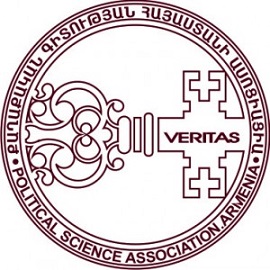Khojaly a Symbol of Azeri Propaganda, Researchers Say
Khojaly a Symbol of Azeri Propaganda, Researchers Say –
The Political Science Association of Armenia
YEREVAN (ArmRadio)—On Feb. 22, a special seminar by the Board of the Political Science Association of Armenia (PSAA) was convened on Azeri propaganda and falsifications regarding events that took place on Feb. 26, 1992, in Aghdam during the Karabakh war, referred to by the Azeri government as the Khojaly massacres. The special meeting was convened at the Defense Ministry’s Drastamat Kanayan Institute for National Strategic Studies.
The Chairman of the PSAA, Dr. Hayk Kotanjian headed the session, which the PSAA titled, “The Aghdam Events (Khojaly Provocation): A Symptomatic Example of the Azerbaijani Authorities’ Falsification Policies”
“On February 26, 1992, the Aghdam events took place, which are presented by the Azerbaijani side as the ‘Khojaly massacre,’ during which a group of inhabitants of Khojaly was cold-bloodedly shot down by Azerbaijani paramilitary forces in the territories under their control,” said a report adopted by the Association following the seminar, which recorded conclusions drawn from the meeting.
The rest of the report follows.
“Aiming to overthrow President Mutalibov, the oppositional Popular Front of Azerbaijan used its Karabakh troops to suppress Azerbaijani forces stationed in Khojaly who were regularly shelling the Armenian-populated Stepanakert and surrounding villages. President Mutalibov personally attested to this in his interview with Russia’s Nezavisimaya Gazeta in 1992.
“Prior to the operation, the Armenian Karabakh side, abiding by international humanitarian norms and law, informed Khojaly authorities of the planned offensive operation and of a safe corridor left for the evacuation of the Azerbaijani population.
“Right after the tragic events in the Azerbaijani-controlled territories, the Azerbaijani journalist Chingiz Mustafayev photographed and video-recorded corpses in the village, which were not mutilated. Meanwhile, in photos taken by the same photographer two days later, the bodies were grossly mutilated ‒ to demonstrate the ‘cruelty and inhumanity’ of the Armenians. The existing irrefutable facts prove that the Armenian Karabakh side did not have physical access to those territories where the villagers were killed. It is also problematic that Mustafayev, having witnessed the horrific crime, died a few months later in circumstances not yet clear.
“After the takeover of power in Baku in 1992, following the Aghdam provocation, the new leadership of Azerbaijan, with Abulfaz Elchibey at the helm, tried hard to hush up the heinous crime committed by itself against the citizens of Khojaly, and initiated a targeted falsification of events presenting its own provocation as a “massacre” of the civilian population organized by Armenian Karabakh forces. Official Baku continues this policy to this day.
“By means of vicious propaganda, Azerbaijani authorities try to harm the international reputation of the two Armenian states, as well as to impose a distorted view of events on younger generations, thereby instigating Armenophobia and xenophobia.
“Considering the fact that Turkey and Azerbaijan have decided to act in tandem to propagate a myth about the ‘Khojaly massacre’ in the run-up to the 100th anniversary of the Armenian Genocide, the Political Science Association of Armenia calls on the international community to prevent Baku and Ankara from distorting historical truth for political gain.
“The Political Science Association of Armenia also appeals to honest Azerbaijanis to impartially assess historical facts and not to fall for the Aliyev regime’s xenophobic policies.”

